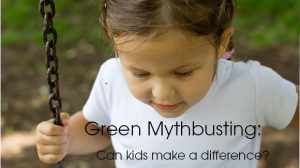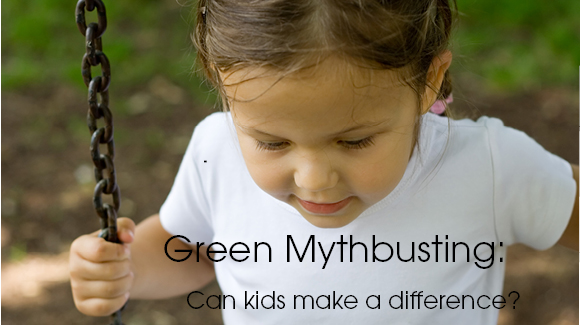 Preserving the environment and ensuring it will be around for future generations is an idea that is still being debated and researched even in our age of advanced technology. Today’s youth are beginning to be exposed to these ideas but these issues are very complex, so how can a child who still sees the world in simple terms and who is not in control of things understand these big ideas and make a difference?
Preserving the environment and ensuring it will be around for future generations is an idea that is still being debated and researched even in our age of advanced technology. Today’s youth are beginning to be exposed to these ideas but these issues are very complex, so how can a child who still sees the world in simple terms and who is not in control of things understand these big ideas and make a difference?
In actuality, teaching youth has a huge influence on the future of the planet by implementing responsible views towards aspects of the environment. By learning these habits at a younger age, kids are more apt to continue these practices into adulthood. In fact, there are kids today all over the world that are already making a difference in the environment. Severn Suzuki is one example of a child making a significant positive difference in the world. She is recognized for her speech at the UN Earth Summit in 1992 that inspired millions around the globe. Referred to as ‘The Girl who silenced the World’, Severn’s incredible speech before government delegates and politicians urged adults to ‘stop breaking what they cannot fix’ and to take responsibility today for actions to prevent further destruction in the future. Her speech has brought many people to tears with her influential words, including myself, and is still relevant today. To view her speech, click here.
More recently, another influential 10-year-old, Ta’Kaiya, has grabbed the attention of Canadian MPs on the 22nd anniversary of the Exxon Valdez Oil Spill. The young environmentalist is from the Sliammon First Nation and her name means “special water.” With the help of her singing teacher, Ta’Kaiya wrote a song in response to the proposed twin 1,170 km pipelines to bring dirty oil from the Alberta tar sands to B.C.’s north coast. That would mean oil supertankers would trek through the Great Bear Rainforest, destroying a beautiful and ecologically-significant region. Her video was viewed over 5000 times on Youtube and emailed directly to MPs with the general message of taking responsibility for what happens in the environment and to realize the consequences of our actions.
In today’s society, more and more children’s books and t.v. shows are focusing on aspects of the environment to teach children environmental responsibility early on. Shel Silverstein’s “The Giving Tree” and Philip Hoose’s “It’s Our World Too” are just a couple examples of literature trying to make youth aware of being environmentally responsible. PBS kids also has resources for kids already keen on helping the environment which can be found here.
Teaching kids to care for the Earth is one of the best ways to ensure a better future for them and other generations. Therefore, this week’s myth is BUSTED!




Nature is a way to greatness and it has a lot of advantages
More evidence is in: 17 year old environmentalist, Carly Breault recently send me a link to her new blog, Small Impact Teen: http://smallimpactteen.blogspot.ca/
Over the next year, Carly plans to follow these simple rules towards making a difference:
1. Start an organic garden with a compost
2. Clean-up garbage around neighbourhood or area in city at least once a week
3.Go vegetarian
4. E-mail all my homework assignments.
5. Shower, with homemade shampoo, twice a week for only 3 minutes each time (yes, I’ll be timing)
6. Drink from reusable beverage containers
7. Produce no garbage. Zero. (that means no more granola bars)
8. Write on both sides of the paper
9. Pack my lunch in a resuable container
10. Always turn off the lights when I leave a room
Another voice of the future to watch for!
In May, West Broadway is hosting a hundred high school students from the suburbs for community workshops like tree banding and composting.
Their most popular choice was composting
workshops!
They’ll be helping me move bags of leaves, turn compost bins, and checking out a red wriggler worm bin.
Kids can make a huge difference. It is often challenging to get adults, who have strongly formed habits to change, but children are still in development. Children are also more likely to be outraged by information on what is happening to the environment and eager to do something to improve the situation. While they cannot change how their parents act or think, they are at least aware of what is happening, and can control their choices as they grow up.
When presenting environmental issues to children, I believe it is essential to set children up for a do-able action. If they hear about the amount of waste in their school, and get a chance to see all the waste, sort it and perhaps make puppets with stuff that can be salvaged it is more likely to stick with them. Then, they need to be able to take action. The action works best if they come up with it, and children more often than not, will suggest great ideas. If one or a few of their ideas are acted upon, they have their first change making experience. The issues can get more and more complex as the child develops as will their ability for critical thinking, and problem solving. Our students would then be ready to take into environmental issues into account no matter what career choice they choose.
I believe that we need to share age-appropriate information with kids, and create learning experiences that inspire curiosity, critical thinking and compassion and we present opportunities for them to be solutionaries.
And, to as often as possible, get children outside interacting with nature, playing and falling in love with the earth. If they are aware, connected and feel part of nature — they’re more likely to stand up for it.